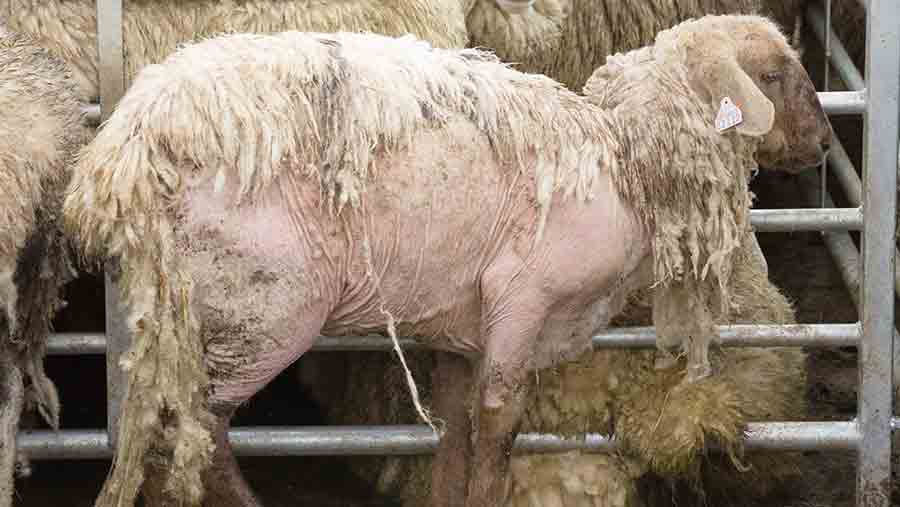Sheep scab warnings follow spike in cases
 © Tim Scrivener
© Tim Scrivener Soaring numbers of sheep scab cases mean farmers should deal with every bought-in sheep as if it has scab, say sheep experts.
Proper quarantining of stock, plunge dips, macrocyclic lactone (ML) injections and blood testing are all options to keep the condition at bay.
Sheep scab: the numbers
- 7,000-10,000 clinical cases in the UK each year
- Each case costs £12-£18 a ewe
- The Psoroptes ovis scab mite can survive in the environment for 17 days
Source: AHDB Beef and Lamb
This is the advice from Peter Bates of Veterinary Medical Entomology Consultancy (VMEC) and independent sheep consultant Lesley Stubbings, who said scab has been rife this year.
See also: Dipping sheep to control scab – what you need to know
Increased sheep movements seen in autumn and winter could exacerbate scab. Dr Bates recommended the following protocol to keep scab at bay when buying in:
1. Always assume the sheep have scab.
2. Keep animals in quarantine for at least three to four weeks.
3. Treat or test the quarantined animals. This can involve:
- Blood testing all the animals in quarantine after two weeks to see whether they have been in contact with sheep scab. This is the ideal first step as it can avoid unnecessary treatment.
- Injection with ML.
- Plunge dip using an organophosphate (OP) (diazinon) dip.
Ms Stubbings said: “This is the worst year that I have known. Our local mobile sheep dipper is run off his feet.
“Part of this could be that endemically infected flocks may not have clinical signs and farmers do not realise that scab is still active in their sheep, so they are not controlling it. It could also be associated with resistance to some injectables.”
Resistance
Dr Bates said there were two ways sheep farmers may be contributing to parasite resistance to sheep scab control:
- Non-validated methods of dip application, such as showers and sprayers – this has the potential to generate resistance in the scab mite.
- Overuse of ML injections for scab control – this can generate resistant gut worms, worsening anthelmintic resistance.
Using injectables
Plunge dipping in organophosphate is one of the best ways to remove scab, according to Dave Armstrong, national veterinary manager at Zoetis. However, a hike in the cost of dipping licences means injectables are a must for some.
Dr Armstrong advised farmers to remember that:
- All MLs are wormers, too, so avoid repeat doses and make sure their use is necessary to avoid anthelmintic resistance.
- Most MLs don’t offer persistent scab protection, so sheep need to be moved to a pasture that has been cleaned for three weeks, as scab can live in the environment for 17 days.
- It is best to use products that offer persistent protection for 28 or 60 days.
